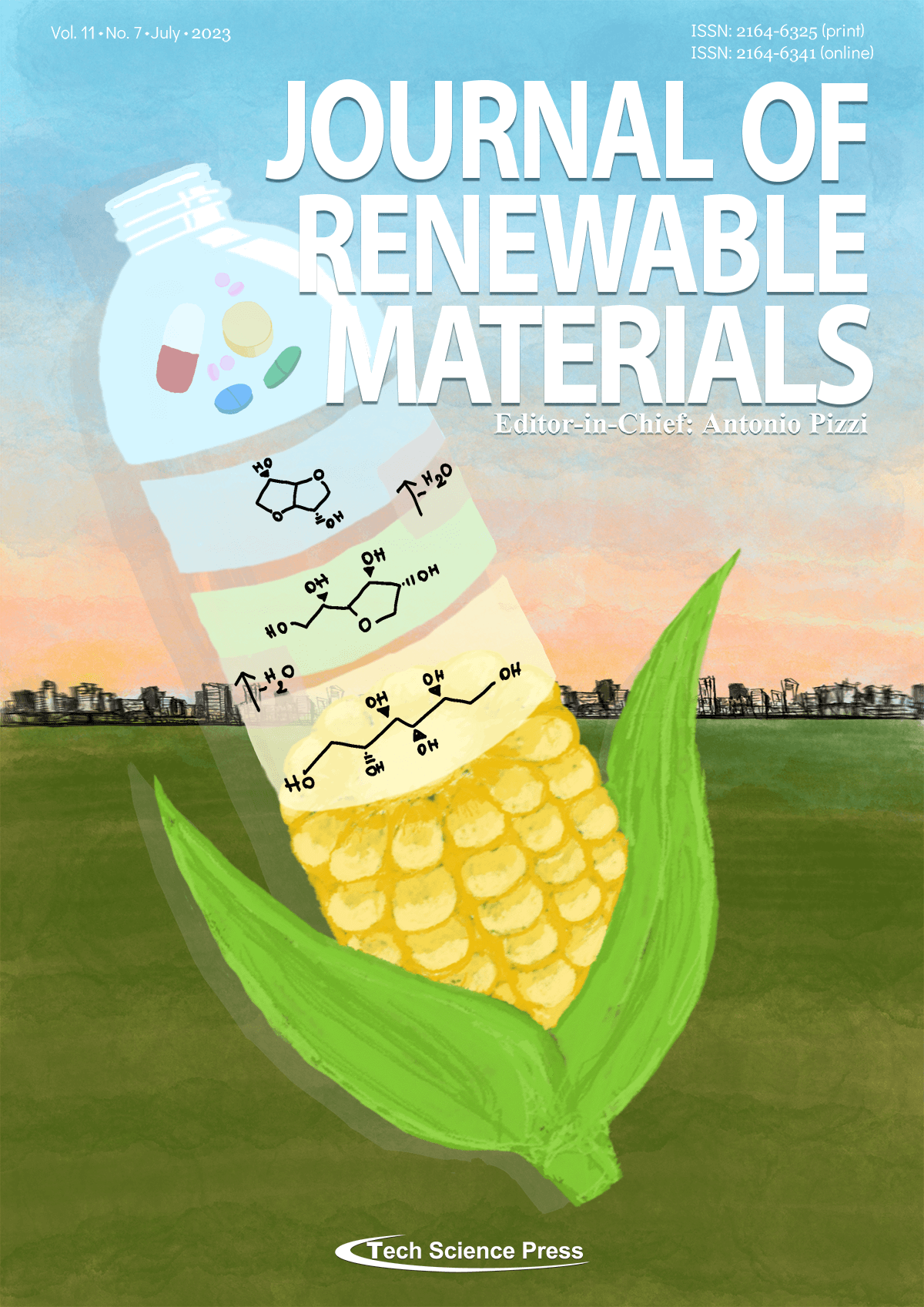Research of Microstructure, Phase, and Mechanical Properties of Aluminum-Dross-Based Porous Ceramics
Liang Yu1,2,3, Yuan Liu1,2,3, Xiuling Cao4,*, Yulong Yan1,2,3, Chen Zhang1,2,3, Yanli Jiang1,2,3,*
Journal of Renewable Materials, Vol.11, No.7, pp. 3057-3072, 2023, DOI:10.32604/jrm.2023.025732
- 05 June 2023
Abstract In this study, the effect of sintering temperature and the addition of kaolin, a sintering agent, on the microscopic, phase, and mechanical properties of ceramics were investigated using secondary aluminum dross (SAD) as the main component in the manufacturing of ceramics. The basic phases of the ceramics were Al2O3, MgAl2O4, NaAl11O17, and SiO2 without the addition of kaolin. The diffraction peaks of MgAl2O4, NaAl11O17, and SiO2 kept decreasing while those of Al2O3 kept increasing with an increase in temperature. In addition, the increase in temperature promoted the growth of the grains. The grains were uniform in size and regular… More >
Graphic Abstract
